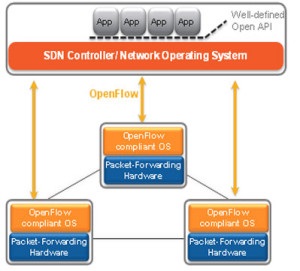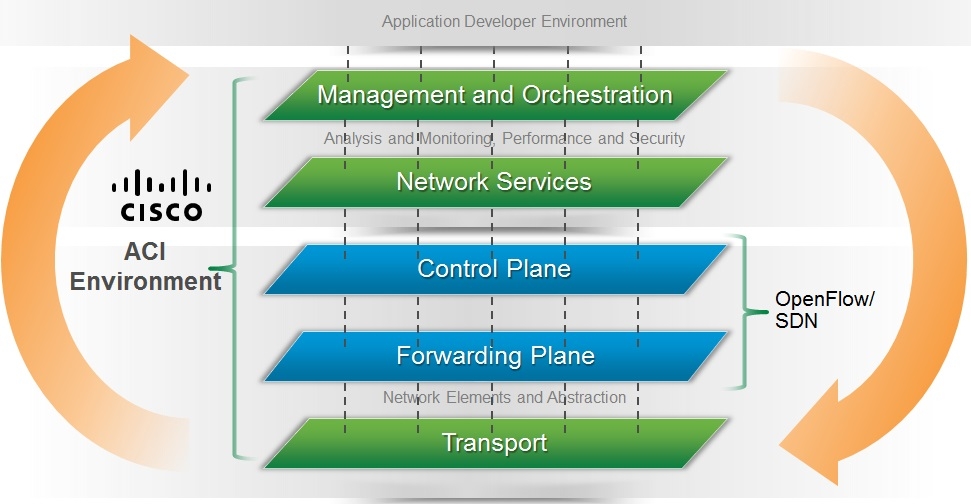
Software-Defined Networking is a trend. What’s the SDN solution? Why SDN today? In the following part, we will introduce the basic knowledge of SDN and the main key benefits of OpenFlow based SDN.
Software-defined networking can be defined as a new approach to design, implement and manage networks that is based on the concept of separating the network control plane and data plane, where the control plane provides an abstracted centralized view of the network.
- The control plane you can think of as the brain of the network where the all the intelligence happens such as routing function (path peering, path selection etc.)
- Control plane on the other hand, you think of it as the muscular part where all the heavy load of the traffic forwarding happens.
With the classical networking approach, both of these functions as co-exist on the same network device.
Using the SDN approach, as highlighted earlier these two functions are separated, in which the control plane is centralized and the forwarding plane is ket distributed.
As a result, SDN provide the ability of administering traffic and deploying services centrally to address changing business needs, without having to touch each individual switch or router in the forwarding plane.
OpenFlow can be considered as the first (SDN) standard that is managed by Open Networking Foundation (ONF) which facilitates the communications interface defined between the controls and forwarding layers of SDN architecture. Moreover, SDN facilitates innovations and enable efficient services automation by providing open, application programmatic interfaces (APIs).

Why SDN
According to ONF, the main key benefits of OpenFlow based SDN:
- OpenFlow-based SDN creates flexibility in how the network is used, operated, and sold.
- It promotes rapid service introduction through customization,
- It lowers operating expenses and results in fewer errors and less network downtime because it enables automated configuration of the network and reduces manual configuration.
- OpenFlow-based SDN enables virtualization of the network, and therefore the integration of the network with computing and storage.
- As a standard way of conveying flow-table information to the network devices, it fosters open, multi-vendor markets.
However, OpenFlow based SDN lack to scalability, visibility, security and associated with complexity and disjoint overlays. Cisco introduced a new approach and architecture that is driven from SDN with more emphasis on the most important part in the Data center which is the application, called Application Centric infrastructure ACI .
Learn more about ACI: Cisco ACI Approach and Architecture

Info from https://supportforums.cisco.com/t5/solutions-and-architectures/cisco-aci-architecture-simplified/ta-p/3145891


